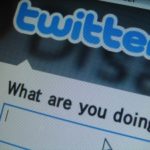
College students aren’t flocking to Twitter, but they’ve proven more likely to type the 140-character updates than most demographic groups, especially teenagers and young adults.
Of American adults who use the internet, 8 percent use the microblogging site Twitter, according to a recent survey from Pew Internet & American Life Project. Only 2 percent of the more than 2,200 respondents use the site on a daily basis.
One of the most striking contrasts can be seen in tweeters’ education levels: 9 percent of those with some college experience used the platform, equaling the same percentage of tweeters who had completed college or moved on to post-graduate education, according to the Pew findings.
Twitter, which launched in July 2006, has about 100 million users, according to industry estimates. That’s about one-fifth the number of Facebook users.
The Pew survey found that 14 percent of 18-29-year-olds use Twitter, doubling the percentage of 30-49-year-olds who use the site. One in 10 women surveyed user Twitter, and about 7 percent of men.
Web users who live in urban areas are most likely to tweet, with 11 percent saying they regularly use Twitter. Only 5 percent of Americans in rural areas use the website, according to Pew.
More recent news on Twitter use in higher education:
Can Twitter use help improve grades? Some researchers think so
The survey showed that African Americans and Hispanics were more than twice as likely to use Twitter as white respondents.
Social media professionals said that while the Pew survey illustrated that many Twitter users log on frequently–one in four said they checked the site several times every day–there were an alarming amount of tweeters who didn’t keep up with the fast-paced information exchange.
About half of Pew respondents said they check their Twitter accounts “every few weeks,” less often than that, or “never.”
“That means a lot of accounts broadcast without two-way dialog,” wrote author Geoff Livingston, co-founder of social enterprise website Zoetica, in a Dec. 20 blog post. “Twitter dubs itself as an information service, but if no one checks then information is not getting spread as far as one would be led to believe.”
Raymond Rose, a longtime online education developer, said Twitter’s reputation as a site for constant sharing and interacting could be overblown if the Pew statistics are accurate.
If half of tweeters use their accounts sporadically, “that means no re-posting, no reading comments, nothing more,” Rose said. “They identify themselves as Twitter users, so the assumption has to be that they only post.”
Pew’s Dec. 9 Twitter research was released just weeks before a similar survey conducted by Digital Surgeons, an online marketing firm with expertise in social media use.
The Digital Surgeons survey analyzed the various groups of regular tweeters, and found that 28 percent of Twitter users are college graduates, and nearly half are currently in college. Seven percent of tweeters are in high school, according to the findings.
Twitter use has been proven to be more than just a distraction for college students. Academics have said the microblogging site can be an academic boost for students.
In an article published in the Journal of Computer Assisted Learning Nov. 12, researchers unveiled findings from a midsized college campus that suggest students who communicated through Twitter during and after class had a GPA of about a half-point higher than students who didn’t use the social media site.
Students who used Twitter also scored higher on a student engagement exam administered at the college, which was unnamed in the article, titled “The Effect of Twitter on College Student Engagement and Grades.”
“As there is continuing growth in the use of social media by college students and faculty, it is hoped that this study will motivate further controlled studies of Twitter and other social media to evaluate how emerging technologies can be best used in educational settings” and how educators can better use Web 2.0 technologies in their curriculum, the report said.
- Research: Social media has negative impact on academic performance - April 2, 2020
- Number 1: Social media has negative impact on academic performance - December 31, 2014
- 6 reasons campus networks must change - September 30, 2014

